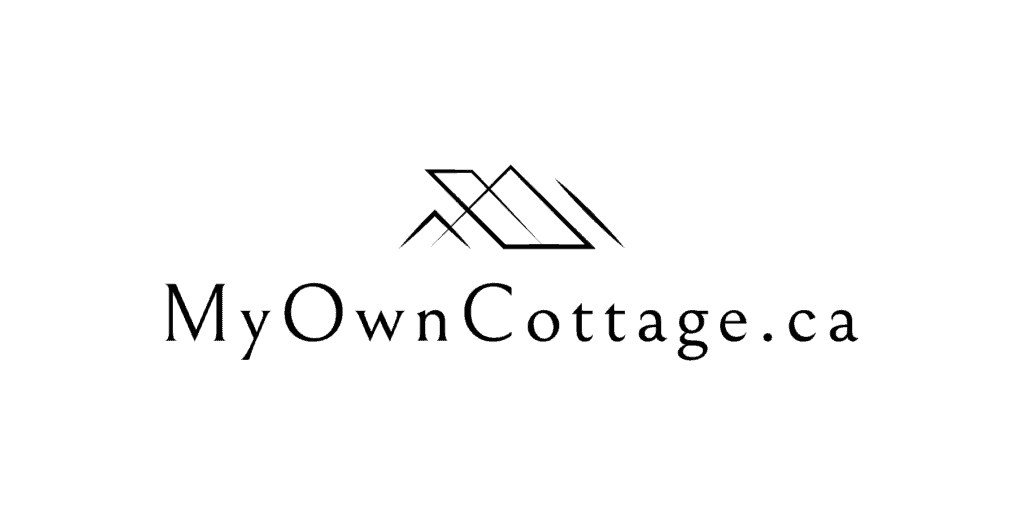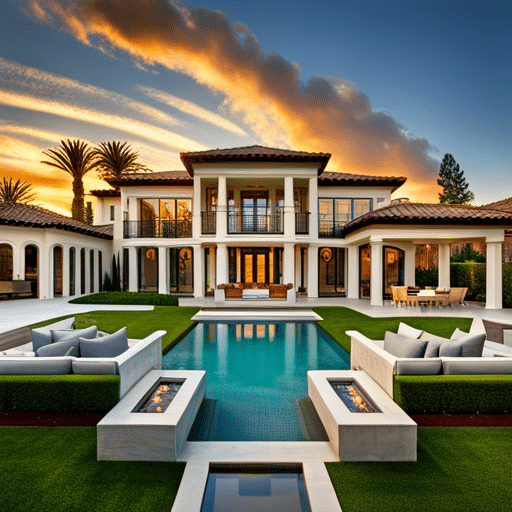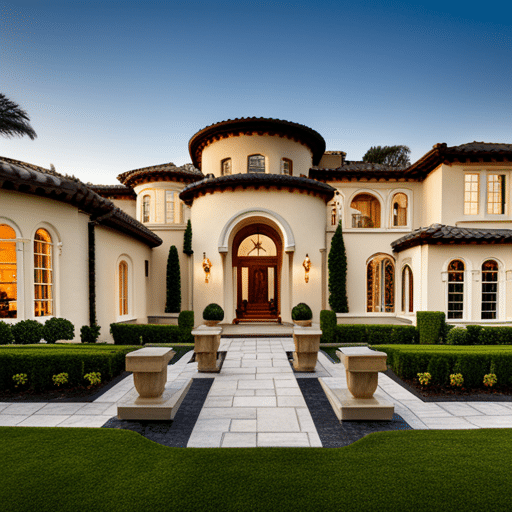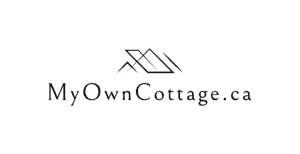Time Efficiency in Construction of Prefab Homes
Home » Time Efficiency in Construction of Prefab Homes
The time efficiency in construction of prefab homes means significantly reduced building timelines, offering a faster route to homeownership.
When it comes to envisioning your dream home, the actuality of ‘home sweet home’ often involves a lengthier and more complex build process than we’d like.
But what if there was a construction method that could cut your building time in half?
Enter prefab homes – a modern marvel of construction speed and efficiency that’s taking Ontario’s sustainable housing market by storm.
In point of fact, the economic benefits of prefabricated housing in Ontario cannot be overstated.
From first-time homeowners to those with a penchant for sustainable living, Ontario’s prefab housing industry has become a beacon for those interested in fast, eco-friendly, and often customizable housing solutions.
Our own prefab homes in Ontario offer budget-friendly and customizable designs, coupled with eco-friendly advantages!
Prefab Phenomenon: Understanding the Appeal
Prefabricated homes, or “prefabs” as they’re often affectionately called, are constructed off-site in a factory before being transported in modules to the build site.
This methodology brings several key advantages that we will cover in detail:
- Faster Time to Occupancy: On average, prefab homes are constructed in half the time of traditional builds, sometimes in as little as three months from start to finish.
- Weather-Indifferent Building: Since many elements of the home are built indoors, inclement weather doesn’t typically delay construction.
- Energy Efficiency: Prefab homes can be designed for optimal energy performance, saving you money on utilities in the long run.
- High-Quality Construction: Rigorous quality control within the factory setting often results in sturdy, long-lasting homes.
The Prefab Process from Factory to Foundation
Understanding the process behind prefab construction can demystify the speed at which these homes are assembled:
- Initial Design Phase: You work with the prefab company’s design team to create a custom home or select from a catalogue of existing designs.
- Materials Sourcing: Once designs are finalized, the factory orders and receives all necessary materials, ensuring everything is on-hand for efficient assembly.
- Factory Building: Skilled workers construct each module indoors, where the controlled environment allows for precision work and prevents weather-based delays.
- Transportation and Assembly: Once complete, the modules are transported to the build site and lifted into place, and your home is ready for finishing touches.
Practical considerations for prefab homeowners include selecting the right manufacturer, understanding assembly requirements, and navigating zoning laws.
The Ontario Advantage
Ontario offers a unique backdrop for the rise of prefab housing, particularly due to the following factors:
- Inclement Weather Challenges: Ontario’s seasonal weather is notorious for slowing down construction. Prefab homes offer a workaround, as key components are built indoors and are ready to go when spring arrives.
- Sustainable Development Mandates: The province’s strong push for sustainable living options makes prefab homes an ideal choice, with their reduction in on-site waste and potential for high energy efficiency.
- Rapid Urbanization: As cities like Toronto and Ottawa expand, quick housing solutions become imperative, and prefab homes can satisfy the need for rapid construction.
- Affordable Housing Initiatives: Ontario’s ongoing focus on affordable housing makes the cost-effectiveness of prefab homes incredibly attractive.
Navigating Customization and Personalization
One common misconception about prefab homes is that they lack the personal touch of a custom build.
In reality, many prefab companies offer extensive customization options, allowing for homes that reflect your personality and functional needs:
- Design Flexibility: You can often tweak layouts, choose from a variety of finishings, and select add-ons such as solar panels or smart home technology.
- Prescribed Standards: Prefab companies still must adhere to all building codes and regulations, ensuring your home meets or exceeds industry standards.
Practical Considerations for Prefab Homebuyers
Choosing a prefab home is a major decision, and there are practical matters to consider beyond just the speed of construction:
- Cost Comparison: While prefab homes can be more cost-effective in many cases, it’s wise to compare overall costs with traditional builds, factoring in land purchase and other expenses.
- Site Preparation: Your build site will require specific preparation to accommodate the delivery and assembly of your prefab home.
- Builder/Manufacturer Communication: Open dialogue between you, the prefab company, and the construction team is crucial to a smooth building process.
Faster Time to Occupancy of Prefab Homes in Ontario
The real estate market is a complex and rapidly evolving machine with each cog and gear playing a crucial role in driving forward.
Amidst this dynamism, prefab homes are carving a solid niche, primarily due to their remarkable efficiency in construction and sustainability.
For those looking to cut the ribbon and enter their dream home faster, Ontario’s prefab home market is stirring with some exciting solutions.
This comprehensive section will explore how the prefab home market in Ontario is not only revolutionizing the idea of homeownership but also paving the way for a more sustainable and accessible future for prospective homebuyers.
Unpacking the Prefab Home Phenomenon
Prefabricated or ‘prefab’ homes, are not a new concept.
Industry studies indicate that this mode of home construction has been operational for centuries, albeit under different names.
However, the modern prefab movement has a twist – it embodies cutting-edge technology to create modular homes that often exceed traditional build quality.
One of the primary reasons for the growing interest in prefab homes is their significantly reduced construction time.
This can, in turn, lead to significantly faster time to occupancy for homeowners.
But that’s just the start – prefab homes offer a multitude of benefits, not least an eco-friendly approach to construction.
Naturally, this eco-friendliness resonates with the evolving environmental consciousness of today’s society.
The Process of Prefab Home Construction
Prefabricated homes are built in sections in a controlled factory environment, which not only ensures precision but also accelerates the construction process.
Once completed, these sections are transported to the home site and assembled.
From small, cozy homes to sprawling estates, prefab homes come in all shapes and sizes.
Designers and engineers work hand in hand to ensure that the final product is not only up to code but also reflects the aesthetic preferences of the homeowner.
Meeting and Exceeding Building Standards
A common misconception is that the speed at which prefab homes are put together compromises the structural integrity and safety standards.
This is far from the truth.
Prefab homes must adhere to the same building codes as traditional homes and often surpass these regulations due to their rigorous quality control in factory settings.
Customization and Tailoring
One of the most exciting facets of prefab homes is the level of customization they offer.
With the ability to tailor floor plans, add custom fixtures, and choose from a wide range of finishes, these homes can be as unique as the individuals moving into them.
Benefits and Advantages
Homebuyers across Ontario are rapidly discovering that choosing a prefab home offers a vast array of benefits.
From expedited construction times to eco-friendly design features, the appeal is expanding beyond the initial novelty, solidifying their place in the future of housing.
Sustainable Building Practices
Prefab homes are often touted for their efficiency in material use due to the controlled environment of the factory setting, which minimizes waste.
Additionally, these homes are typically built with energy-saving features that can lead to reduced utility bills.
Environmental Impact and Carbon Footprint
The sustainable nature of prefab homes is particularly attractive to those who want to lower their carbon footprint.
Features like solar panels, advanced insulation technologies, and energy-efficient appliances make a significant difference in the long run, positively impacting the environment.
Local Economic Impact
Prefabricated home manufacturers in Ontario contribute to the local economy by creating jobs and sourcing materials within the province.
This localized approach can lead to stronger communities and a more resilient housing industry.
Shorter Time to Occupancy
Perhaps the most immediate benefit of a prefab home is the speed at which it can be completed.
Traditional home construction can take several months or even years, while a prefab home can be ready for occupancy in a fraction of that time.
Reducing On-Site Labor
The majority of the labor in prefab construction happens in the factory, which means fewer on-site workers and a lower risk of schedule disruptions due to weather conditions.
Faster Return on Investment
With a quicker completion time, homeowners can start enjoying their new property sooner.
They also stand to benefit from a potentially faster return on their investment, should they choose to sell the property.
Cost Efficiency
The streamlined production process of prefab homes often translates to cost savings for both the manufacturer and the homeowner.
Predictability in the building process means fewer surprise expenses, making it easier to stick to a budget.
Lower Financing Costs
A faster construction timeline can lead to lower financing costs for the homeowner.
This is a notable advantage over traditional builds, where delays can lead to increased interest payments.
Maintenance and Operating Costs
Prefab homes are often designed to be low maintenance.
With a younger age in housing terms, they generally require less upkeep, leading to additional long-term cost savings.
Ontario's Emerging Market
The prefab home market in Ontario is bustling with activity, with numerous manufacturers and builders bringing innovative designs and construction methods to the forefront.
Local Industry Leaders
Ontario has seen a surge of local companies that are at the forefront of the prefab home movement.
These industry leaders are not only shaping local policy and infrastructure but are also contributing to the global conversation on sustainability and efficiency.
Finding the Right Manufacturer
Choosing the right manufacturer is a crucial step in the prefab home process.
Researching them online and seeking a free consultation can provide valuable insights into their capabilities and the quality of their homes.
At My Own Cottage, we offer free consultations to anyone interested in learning what we can offer!
The Role of Technology
Technology plays a pivotal role in the prefab home sector.
From advanced design software to state-of-the-art manufacturing equipment, technological advancements are driving the industry forward.
Virtual Tours and Design Software
In a post-pandemic world, virtual tours and design software have become essential tools for homebuyers.
These innovations allow prospective homeowners to explore different home options and customize their designs from the comfort of their own homes.
Smart Home Integration
Smart home technology is becoming increasingly prevalent in prefab designs.
From security systems to energy management, these integrations offer a level of convenience that is becoming a standard in modern living.
Overcoming the Myths
Despite the numerous advantages, there still remains many myths surrounding prefab homes in certain circles.
This perception stems from outdated models and misconceptions about quality and design.
Education and Awareness
Educating the public about the benefits and advancements in prefab home design is essential in changing the narrative.
Outreach programs, home shows, and media campaigns can all play a role in spreading awareness.
Highlighting Success Stories
One of the most effective ways to combat stigma is by highlighting success stories.
When people see the quality and beauty of prefab homes, their perceptions can shift dramatically.
Partnerships and Collaborations
Partnerships between prefab home companies and established figures in the architecture and design world can lend credibility and visibility to the industry.
These collaborations can result in stunning, high-profile projects that challenge expectations.
The Future of Prefab Homes in Ontario
The future of prefab homes in Ontario is promising, with the potential to reshape the housing landscape for the better.
As the demand for sustainable, efficient, and affordable housing options continues to grow, the prefab industry is poised to lead the charge.
Legislative Support and Zoning
Governments at various levels can provide support for prefab home construction through favorable zoning laws and financial incentives.
By making it easier for builders to access land and permits, policymakers can accelerate the adoption of prefab homes.
Community Integration and Acceptance
Building relationships with local communities and stakeholders is vital for the success of the prefab sector.
By integrating with existing neighborhoods and demonstrating a commitment to quality, prefab home companies can foster acceptance.
Global Collaborations and Trade
Ontario’s prefab industry has the potential to become a global leader in sustainable construction practices.
By fostering collaborations with international partners and exploring export opportunities, local businesses can expand their reach and influence.
Sustainable: High Quality Prefabricated Housing
The prefab home market in Ontario is no longer a novelty but a driving force in the future of housing.
With its ability to deliver high-quality, sustainable homes at an accelerated pace, the industry is poised to make a significant impact on the local economy and the environment.
Homebuyers looking to enter the market with speed and purpose, as well as a clear conscience regarding their carbon footprint, should look no further than the prefab homes emerging across Ontario.
Addressing Common Concerns
- Permanency and Resale Value: Prefab homes have the same longevity as traditional builds and can actually have higher efficiency and durability, potentially increasing their resale value.
- Design Limitations: Prefab homes are highly versatile and can range from traditional to ultra-modern designs, offering a broad spectrum of options.
- Quality and Craftsmanship: Factory-building imposes stringent quality control, ensuring the craftsmanship is top-notch.
Planning for the Future with Prefab Homes
In the Ontario of tomorrow, prefab homes are likely to play a significant role in urban development, eco-friendly housing initiatives, and the general trend towards modular living solutions.
They are not just a quick fix; they represent an exciting future in homebuilding.
Advancements in Prefab Homes Within Ontario
Prefab homes in Ontario offer an enticing and efficient solution for anyone looking to build a sustainable, fast, and high-quality home.
The industry is growing rapidly.
With advances in technology and design, the potential for prefab living is virtually limitless.
Whether you’re a young family, a first-time homebuyer, or an eco-conscious individual, it’s worth considering the prefab option for your next home.
After all, why wait when your dream home could be assembled in record time?
Get Time Efficiency in Construction of Prefab Homes in Ontario: Contact us Today!
With our Affordable Prefab Homes in Ontario, we pride ourselves on delivering exceptional customer service!
We ensure a seamless purchasing and installation process for your dream home.
Our team is dedicated to meeting your unique needs and transforming your vision into a beautiful reality.
To start your journey of building an affordable prefab home in Ontario, we invite you to get in touch with us at My Own Cottage.
You can reach out to us through our website’s Contact Us page, via email, or by direct phone call.
Our expert team is ready to listen to your vision, discuss your requirements, and guide you through the stress-free process of prefab home construction.
We look forward to partnering with you to create a sustainable, highly valuable, and personalized space that reflects your individual style and meets your specific needs.

Contact us today and let’s embark on this exciting journey together.
Thanks for reading!
If you’re interested in building a prefab home, cabin or cottage on a lot of your own, feel free to book a no-obligation consultation with us here at My Own Cottage Inc. – and get started on your dream home today!
P.S: Or if you prefer, you can simply fill out the form below!





